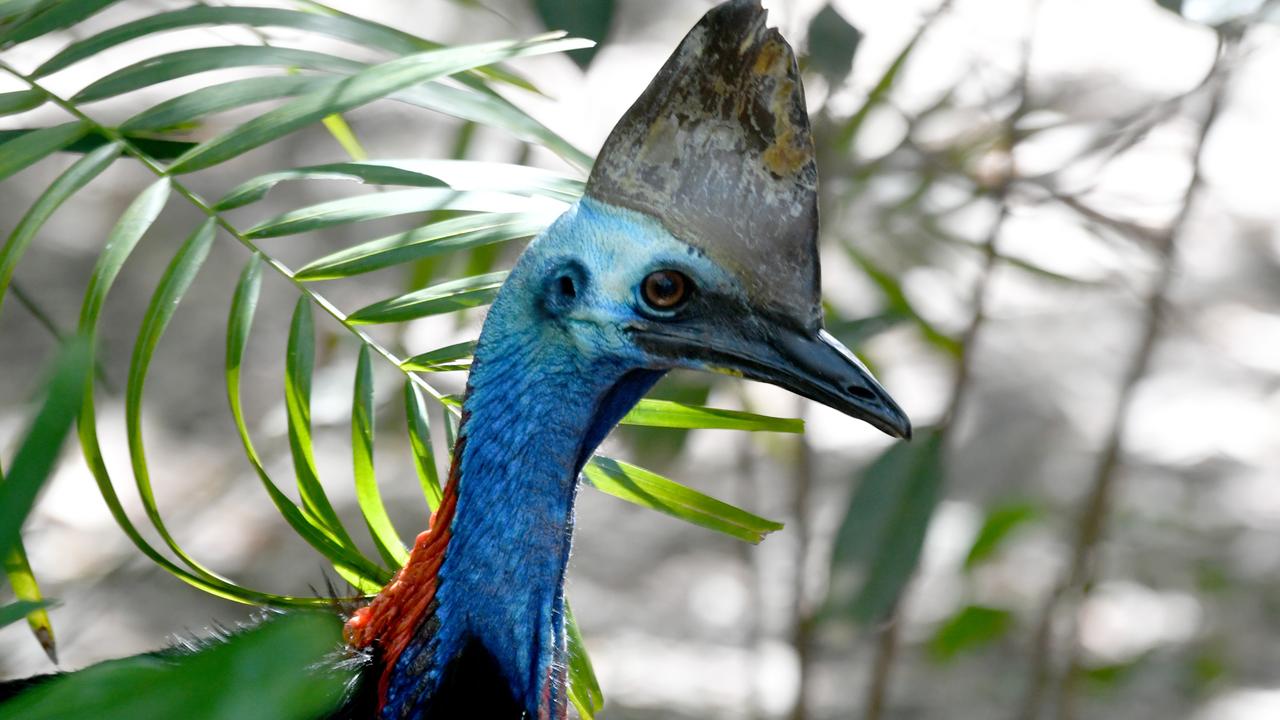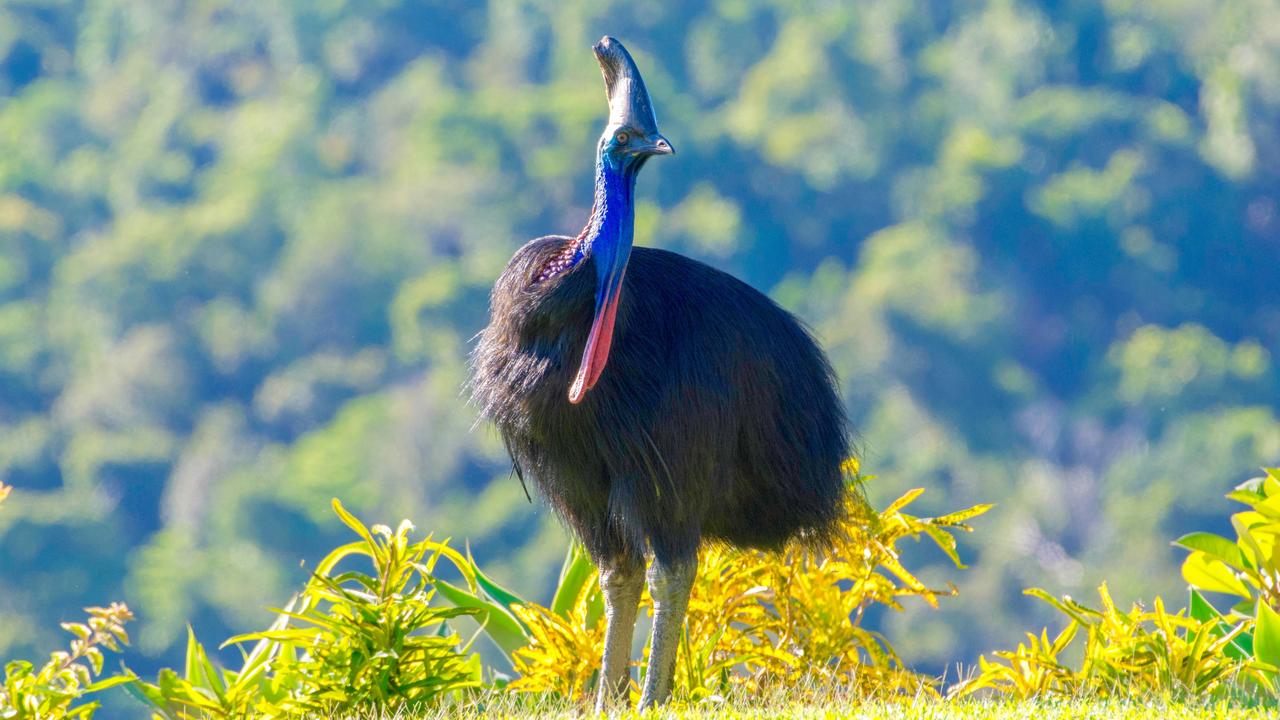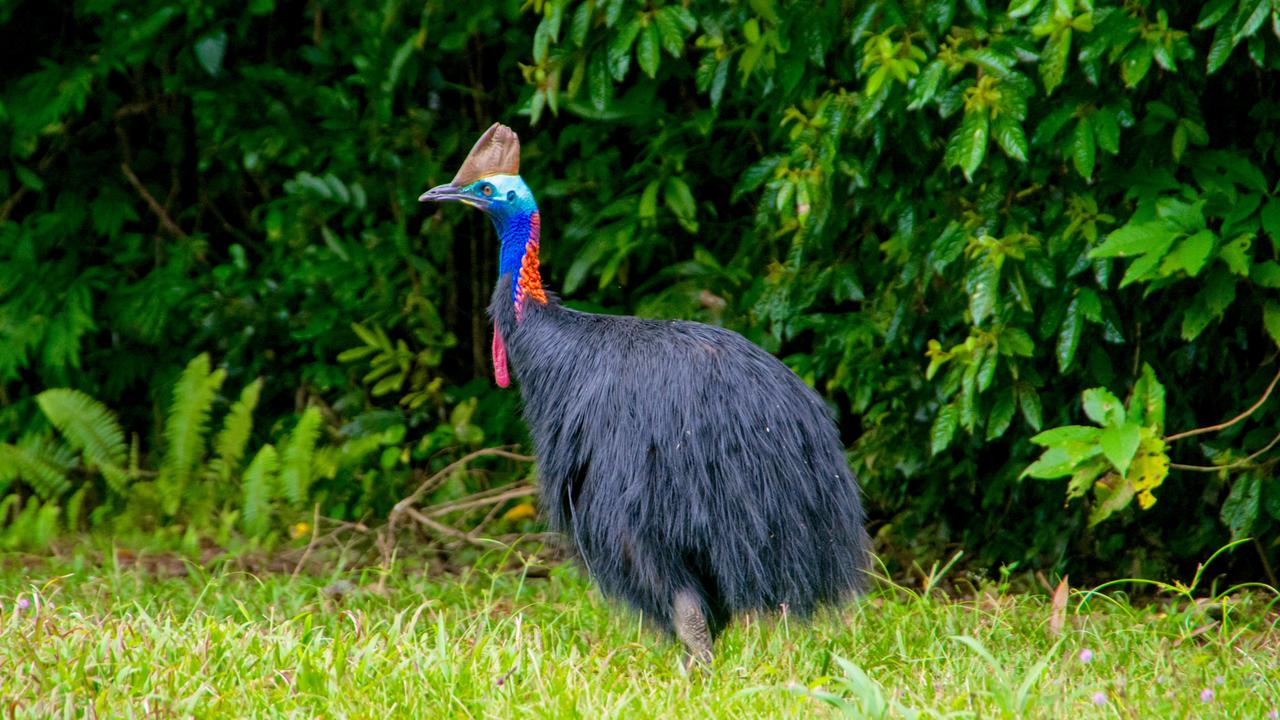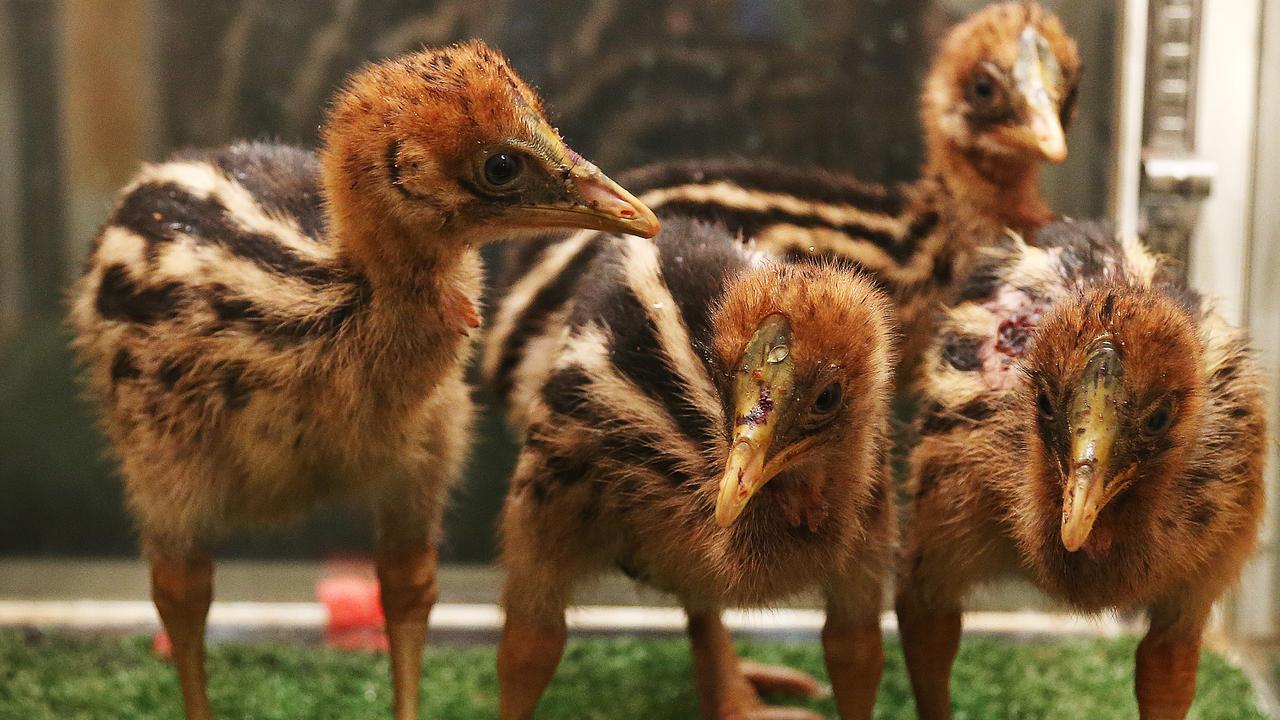Southern cassowary filmed swimming at the beach
A southern cassowary has been filmed swimming to the shore of a Queensland beach in a ‘fish out of water’ moment, proving the flightless bird is not afraid to get its feathers wet

READING LEVEL: GREEN
A southern cassowary has caused quite a splash after it was spotted swimming at the beach in a “fish out of water” moment.
The endangered bird was filmed swimming in the Coral Sea near Bingil Bay, south of Cairns.
Traditional owner Nikita McDowell grabbed her phone to capture the rare moment the flightless bird swam towards the shore.
She said when she first saw the bird’s head and neck poking out of the water far from the shore it was almost like seeing the Loch Ness monster.
“It just floated to shore until it reached the level where its feet could touch the ground,” Ms McDowell said.
The video shows the cassowary being knocked around by waves as it swam toward the beach.
Ms McDowell noticed the bird was looking quite tired from the swim and contacted wildlife carers for help.
Once on land, the cassowary headed to the rainforest, where it brought up the saltwater it had swallowed while in the water.
While it might seem strange for cassowaries to swim, veterinarian and cassowary expert Dr Graham Lauridsen told the ABC the birds could jump in the water if they felt threatened.
Despite the long and tiring swim, the cassowary in the video was unharmed.
Dr Lauridsen said the bird probably felt as tired as a person would after swimming a long distance.

The southern cassowary is officially listed as endangered, with about 4000 left in Queensland.
The primary threats include habitat loss, traffic, and domestic dog attacks.
Dr Lauridsen said it was important for dog owners to secure their pets to prevent harm to both cassowaries and dogs.
Ms McDowell said she felt joy when the cassowary made it to shore safely.
While traditional owners knew cassowaries would hunt for food on the shoreline, seeing one swimming so far out in the water was very unusual.
She said it was a good reminder of the importance of conserving these unique and endangered birds in their natural habitat.

THE CASSOWARY: FACT VS FICTION
The cassowary may be a flightless bird, but that doesn’t mean they can’t swim.
Cassowary expert Dr Lauridsen said the birds were good swimmers, especially if they felt threatened.
Dr Lauridsen said air sacs in the cassowary’s body helped them stay afloat while swimming – much like having natural floaties.
Here are some other fun facts about cassowaries:
- Cassowaries are the third tallest birds in the world, behind ostriches and emus. They can be as tall as six feet or 1.8m and have an average weight of 47kg.
- They have large helmets or casques on their heads as well as a bright blue neck with splashes of red.

- Cassowaries look very much like dinosaurs. While they aren’t actually prehistoric themselves, they are one of the closest living relatives to dinosaurs.
- Recently discovered dinosaur species, corythoraptor jacobsi, look very much like modern-day cassowaries and have the same unique helmets.
- When cassowaries mate, the dad is in charge of keeping the eggs warm. It takes about 50 days for the eggs to hatch.
- The dad also teaches the baby cassowaries to look for food.

- Cassowaries eat rainforest fruit that falls to the ground and help new trees grow by spreading the seeds in their droppings.
- They spread the seeds of about 238 different rainforest species, including 100 plants that depend on the cassowary for germination.
- Cassowaries live in New Guinea and Northeastern Australia with about 4000 thought to be living in Queensland.
- With two muscular legs and three sharp long claws on each foot, cassowaries can be dangerous to people and animals and should never be approached in the wild.
POLL
GLOSSARY
- flightless: unable to fly
- primary: biggest
- conserving: protecting a species from extinction
- habitat: where an animal species lives
- germination: when new plants grow from seeds
EXTRA READING
Ancient ‘sea slayer’ identified from Jurassic seas
Man saves dog from kangaroo
Fat Bear Week winner announced
QUICK QUIZ
1. Where do cassowaries live?
2. How do cassowaries stay afloat when swimming?
3. Why is it important for dogs to be secured in places where there are cassowaries about?
4. What do cassowaries eat?
5. How long does it take for cassowary eggs to hatch?
LISTEN TO THIS STORY
CLASSROOM ACTIVITIES
1. Why was it in the water?
Why do you think the cassowary was in the water? Brainstorm as many ideas as you can, using information in the story to help you. Choose at least one idea. Use the idea to write a creative story or a detailed recount about the cassowary’s experience.
Time: allow at least 25 minutes to complete this activity
Curriculum Links: English, Science
2. Extension
What are some practical actions that could be done to help protect southern cassowaries? Write a list. Next to each action in your list, write sentences explaining how and why this action would work.
Time: allow at least 20 minutes to complete this activity
Curriculum Links: English, Science, Geography
VCOP ACTIVITY
Read this!
A headline on an article – or a title on your text – should capture the attention of the audience, telling them to read this now. So choosing the perfect words for a headline or title is very important.
Create three new headlines for the events that took place in this article. Remember, what you write and how you write it will set the pace for the whole text, so make sure it matches.
Read out your headlines to a partner and discuss what the article will be about based on the headline you created. Discuss the tone and mood you set in just your few, short words. Does it do the article justice? Will it capture the audience’s attention the way you hoped? Would you want to read more?
Consider how a headline or title is similar to using short, sharp sentences throughout your text. They can be just as important as complex ones. Go through the last text you wrote and highlight any short, sharp sentences that capture the audience.

